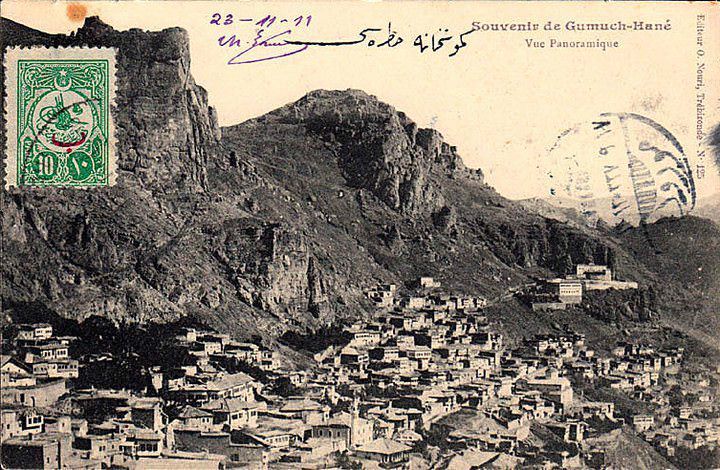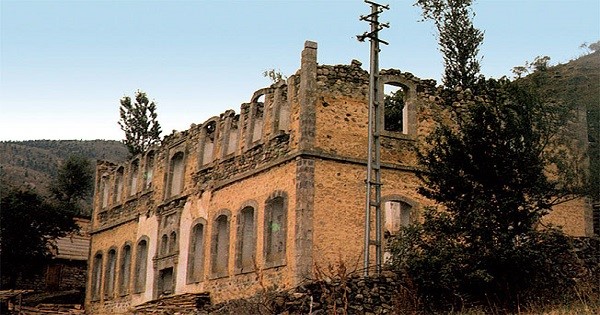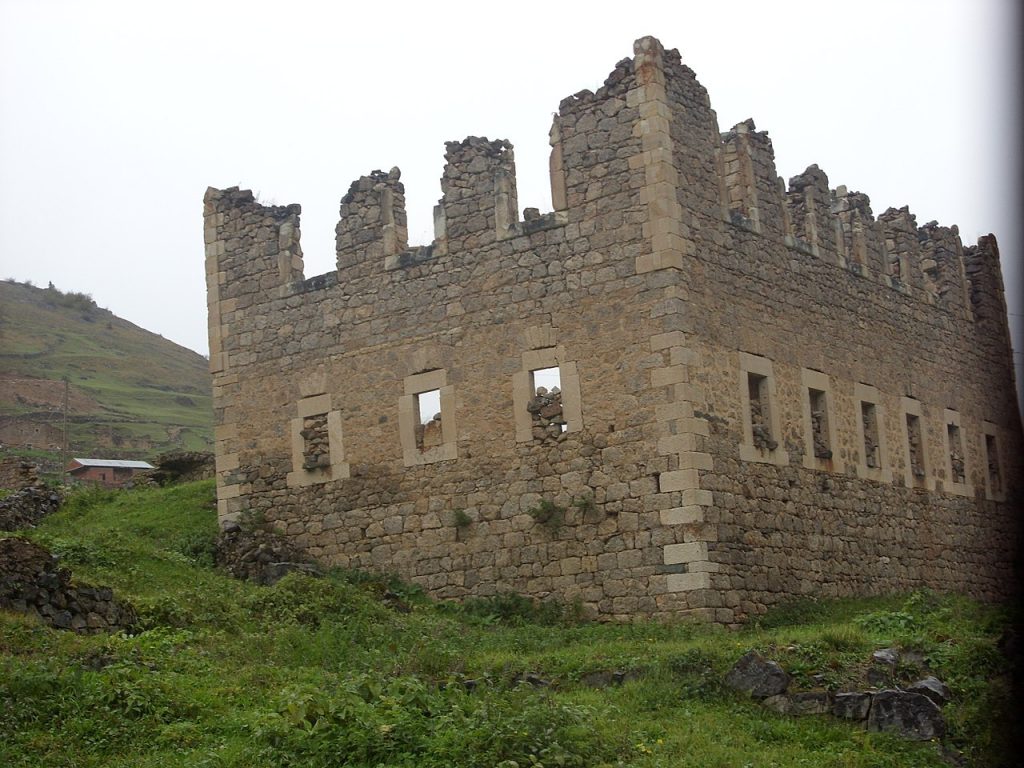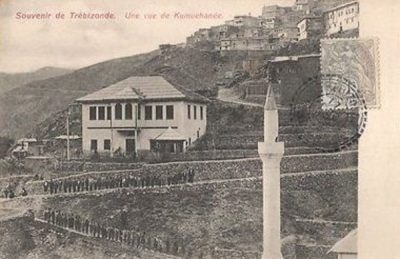
The Mining Center of Pontos: The ‘Silver City’ of Argyroupolis
Argyroupoli(s) (Grk: Αργυρούπολη, Trk.: Gümüşhane) is a town located 80 km south of Trebizond in Pontos, and was the capital town of the historic province of Chaldia. It is located in the eastern Black Sea region at about 1150 m above sea level. Gümüşhane was founded in the narrow valley of the river Harşit Çayı (Grk.: Philabonites), which separates the Zigana Mountains from the Gümüşhane mountains.
The city was established around 700 B.C. as the settlement of Thyra (Grk.: Θύρα) by Ionian Greeks who first discovered silver in the region. In Byzantine period, there was a town named Tzanicha, Tzanika or Tzantzakon (Τζάνιχα, Τζάντζακον in Byzantine Greek), meaning land of the Tzan / Laz people, possibly located 2 miles (3.2 km) to the west of Gümüşhane.
The first residents settled in the region just after the fall of Trebizond (1461). Soon the town attracted miners. Sultan Murad ΙΙΙ (1574-1595) appears to have granted extra privileges to the chief miners, and the town prospered and became a center of Hellenism.
“The mines were the property of the Sultan and under state supervision with all precious metals supposed to be sent to Constantinople. (Without doubt, much precious metal was concealed or smuggled.) However, the mines around Gümüşhane were effectively controlled by the archimetallourgoi, who was invariably a Greek, with the skilled labour also monopolised by Greeks. This situation, by one probably unreliable tradition goes back to the patronage of Maria of Livera (Gülbahar), Pontic Greek wife of Sultan Bayezid II (1481-1512), who gave the Greeks of the area a peculiar economic position and considerable tax privileges. (…) From 1654-1841 both the mining concessionaries (archimetallourgoi) and a new metropolis of Chaldia were in Greek hands, principally the dynasty of Phytianos – which was to provide miners and bishops all over Anatolia and the Caucasus, and a patriarch of Antioch.”(1)
At the time, Gümüşhane comprised 60,000 residents. Its trade was increasing and the whole province of Chaldia was on the rise. Another indicator of its development was that they minted coins with the name ‘Kiumus-hane’ on them. Yet another indicator was the settlement of chief mining families there such as the Sarasites, the Karatsades, the Stavracoglous, the Kalimachidis‘, the Grigorantons and others. There were also numerous jewelry shops opening as well as hagiography and other arts in the region.
The rise in wealth and abundance soon brought positive change to the communities. From the beginning of the 18th century new schools were opening, and from 1723 the Frontistirion (Greek Tuition Center) of Argyroupolis was in full operation. The Tuition Center became an educational institution and spiritual center of the region. In 1650 the diocese was elevated to archdiocese status, and hundreds of churches were built.

But with every rise comes a fall. New mines rich in minerals were discovered in Ak Dağ Maden and Argoni which resulted in a large exodus of miners from Argyroupolis to the new mines. The further dramatic fall in population followed the Russo-Turkish War of 1829–30, when many Greek speaking Pontians of the area collaborated with or welcomed the Russian army that occupied the area. So as to escape likely Turkish reprisals, the majority of the local Pontic Greek population followed the Russian army as it withdrew back into Georgia and Southern Russia, many settling there and joining preexisting communities of Caucasus Greeks that had moved eastwards between the fall of the Empire of Trebizond in 1461 and the 1801 Russian annexation of Georgia, including another community of Pontic Greek miners who had settled in Lore, then Kingdom of Kartli of Georgia in 1778 invited by the king Heraclius II of Georgia. Some of the Pontic Grecophone mining families of Gümüşhane also settled in Nicomedia, Mesopotamia and other mining regions, from Tiflis (Tbilisi) to as far as Ak-Dağ and the Taurus. During those years tension between the Christian Grecophones and Muslim population was also growing due to the Greek Revolution and the public reversion to Greek Orthodoxy of many of the Stavriotes, Pontic Grecophones who had superficially adopted Turkish Islam in the early Ottoman period but who had remained crypto-Christian in private.
During those confusing and troubling times many people became benefactors of Argyroupolis, such as the Sarasite family and the influential teacher Georgios Kyriakidis. Kyriakidis identified the need to extract large sums of money from the churches such as Saint George and Saint Theodore for the educational needs of the town. Sale of church property as well as donations and consecrations resulted in the erection of a new school at the Frontistirion of Argyroupolis, a school which was to operate until the forcible Exchange of Populations between Greece and Turkey (1923). The Frontistirion comprised a three-grade high school, a seven-grade primary school including scholarship classes, and a six-grade girls’ school, as well as a carpet making technical school.
Another public building was the library, the Educational Society Kyriakidis, as well as the Metropolis of Chaldia. The Argyroupolitans therefore are very much regarded as having some of the best resources in education, due mainly to their economic prosperity from mining.

Following the genocide (1914-1923), few Argyroupolitans managed to flee to Greece. Those that did, settled in the Makedonia region of Northern Greece. A small group which settled in Naousa brought precious items with them from their churches as well as items from the library of the Tuition Center including rare manuscripts and books. This collection is still in use today and is considered a prized asset of Naousa.
Argyroupolis was occupied by the Russian army on July 20, 1916, but the Russians withdrew on February 15, 1918 after the fall of the Czar. After the Exchange of Populations (1923) no Greek Orthodox remained in the region.
References:
* The Encyclopedia of Pontian Hellenism. Malliaris Pedia.
* Anthony Bryer, David Winfield: The Byzantine Monuments and Topography of the Pontos. Dumbarton Oaks, p.3
* The Ecumenical Patriarchate: A History of its Metropolitans. By Demetrius Kiminas, p.105
Source: https://pontosworld.com/index.php/pontus/archived/661-argyroupoli-guemueshane-2
